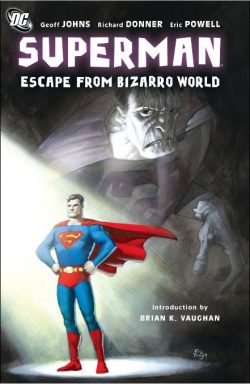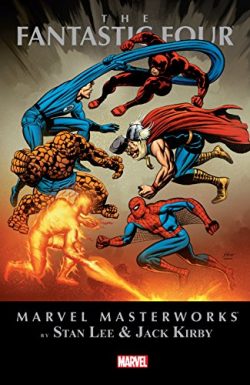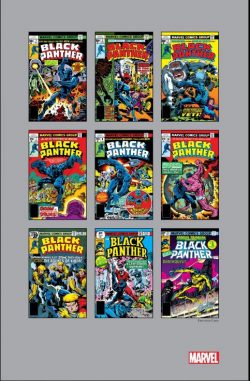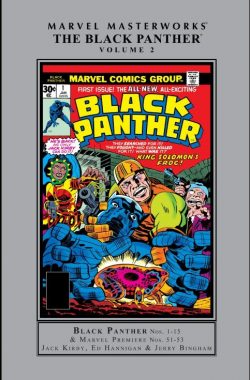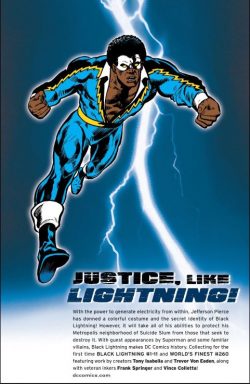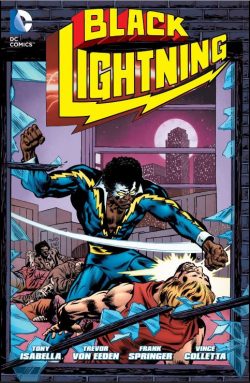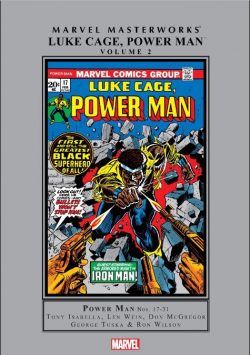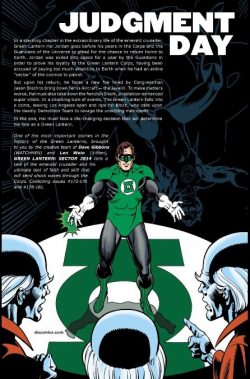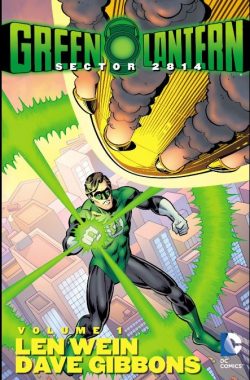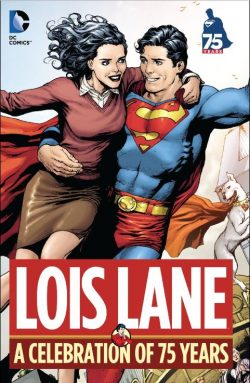
By Roy Thomas, Arnold Drake, Gary Friedrich, Archie Goodwin, Gil Kane, Don Heck, Dick Ayers, Frank Springer, Tom Sutton, John Buscema, Gene Colan & various (Marvel)
ISBN: 978-0-7851-2430-6 (HB)
After more than a decade as an also-ran and occasional up-and-comer, by 1968 Marvel Comics was in the ascendant. Their sales were rapidly catching up with industry leaders National/DC Comics and Gold Key, and the House of Ideas had finally secured a new distribution deal allowing them to expand their list of titles exponentially.
Once the stars of “twin-books†Tales of Suspense, Tales to Astonish and Strange Tales all won their own titles, the new concepts just kept coming.
One dead-cert idea was a hero named for the company – and one with some popular cachet and nostalgic pedigree as well. After the DC/Fawcett court case of the 1940s-1950s, the name Captain Marvel had disappeared from the newsstands.
In 1967, during a superhero boom/camp craze generated by the Batman TV show, publisher MLF secured rights to the name and produced a number of giant-sized comics featuring an intelligent robot who (which?) could divide his body into segments and shoot lasers from his eyes.
Quirkily charming and devised by the legendary Carl (Human Torch) Burgos, the feature nevertheless did not attract a large following. On its demise, the name was quickly snapped up by the ever-expanding Marvel Comics Group.
Marvel Super-Heroes was a brand-new title: it had been the giant-sized reprint vehicle Fantasy Masterpieces, combining reprint monster and mystery tales with Golden Age Timely Comics mystery men classics, but with #12 it added an experimental section for characters without homes such as Medusa, Ka-Zar, Black Knight and Doctor Doom.
The title also debuted new concepts like Guardians of the Galaxy, Phantom Eagle and, to start the ball rolling, a troubled alien spy sent to Earth from the Kree Galaxy. He held a Captain’s rank and his name was Mar-Vell.
All that and even more candid, behind-the-scenes historical revelations are contained in series-author Roy Thomas’ effusive Introduction before this cosmically conceived tome – available in hardcover and digital editions – kicks off. On offer are the contents of Captain Marvel #10-21 collectively spanning cover-dates February 1969 to August 1970 plus a little comedy treat from Not Brand Echh # 9 (August 1968)…
Following the destruction of a long-dormant, mechanoid Kree Sentry and the subsequent defeat by the Fantastic Four of Ronan the Accuser – mighty high official of those long-lost extraterrestrials – the millennia-old empire was once again interested in Earth.
They despatched a surveillance mission to learn everything about us but unfortunately for them, the agent they chose was a man of conscience. However, his commanding officer Colonel Yon-Rogg was merciless taskmaster and secretly a ruthless rival for the love of the ship’s medical officer Una.
No sooner did the good captain make a tentative planet-fall than he clashed with the US army from the local missile base (often hinted at as being Cape Kennedy). Soon though he began fighting for the humans and was mistaken by many – including Security officer Carol Danvers – for a crusading costumed superhero…
To further his mission, Mar-Vell also assumed the identity of deceased military consultant Dr. Walter Lawson: but was quickly discovering that the dearly departed scientist concealed a chequered and probably nefarious past which created a whole raft of new problems for the undercover alien infiltrator…
The war of nerves with Yon-Rogg had intensified to the point that the colonel was openly planning murder and the romantic bond to Una was fractured when Carol Danvers began making her own overtures to the heroic Marvel.
Thus, when Ronan orders Mar-Vell to make allies of Lawson’s super-scientific criminal syndicate – at the cost of Carol’s life – the hero ignores his orders and pays the penalty as he is arrested by his own crew and faces a firing squad in #10’s ‘Die Traitor!’ (scripted by Arnold Drake and illustrated by Don Heck & Vince Colletta).
He is only saved by an ambush perpetrated by the survivors of an Aakon ship Yon-Rogg had previously targeted in #11’s ‘Rebirth!’ (illustrated by new penciller Dick Ayers). In the aftermath, however, the Kree colonel traps his despised rival on a missile hurtling into infinity and assumes his problems are over.
During the battle author Drake took the opportunity to kill off – as nobly as possible – the insipid Medic Una, giving staunch Mar-Vell justifiable reason to openly rebel against his entire race and be reborn under the tutelage of a cosmic entity known only as Zo! who saved the trapped hero from death in the void…
Moribund for months, this new beginning with the honourable, dutiful soldier remade as a vengeful vigilante was a real shot in the arm, but it was still quite clear that Captain Marvel the comic was struggling to find an audience. ‘The Moment of… the Man-Slayer!‘ (Drake, Ayers and the great Syd Shores) sees the newly super-powered hero gifted with a whole new power set by Zo! and return to Earth.
He is hunting Yon-Rogg but soon distracted by a marauding synthetic assassin at The Cape, in a taut spy-thriller with The Black Widow in deadly guest-star mode.
‘Traitors or Heroes?’ concludes the Man-Slayer storyline with Gary Friedrich, Frank Springer & Vince Colletta as creative team, with the Captain finally confronting Yon-Rogg. The villain escapes by threatening Carol…
In #14’s ‘When a Galaxy Beckons…’ the Captain clashes with an entranced Puppet Master-controlled Iron Man as part of an early experiment in multi-part cross-overs (Sub-Mariner #14 and Avengers #64 being the other parts of the triptych) before leaving Earth… forever, he believes…
The going gets all cosmic in #15 (magnificently illustrated by Tom Sutton & Dan Adkins in a boldly experimental manner) as ‘That Zo Might Live… A Galaxy Must Die!’ sees Mar-Vell return to his home world on a mission of total destruction that wraps up the first career of Captain Marvel in spectacular style.
Beguiled and grateful, the hero revisits his homeworld determined to obliterate it for his almighty sponsor only to uncover an incredible conspiracy before the awesome truth is exposed in #16’s ‘Behind the Mask of Zo!’ by Archie Goodwin, Heck & Shores.
This yarn is the first great “everything you know is wrong†story in Marvel history and captivatingly makes sense of all the previous issues, supplying a grand resolution and providing a solid context for the total revamp of the character to come. That’s how good a writer Archie Goodwin was. And if you read Roy Thomas’s aforementioned Introduction, a clandestine creative secret is finally revealed…
Captain Marvel #16 is a magical issue and I’m being deliberately vague in case you have yet to read it, but I will tell you the ending. After saving the entire Kree Empire Mar-Vell is flying back to Earth in his new red-&-blue costume, when he is suddenly sucked into the anti-matter hell of the Negative Zone…
It’s probably best to think of everything previously discussed as prelude, since Captain Marvel as we know him really begins with #17 as Thomas, Gil Kane & Dan Adkins totally retool and upgrade the character.
‘And a Child Shall Lead You!’ sees the imperilled Kree warrior inextricably bonded to voice-of-a-generation and professional side-kick Rick Jones who – just like Billy Batson (the boy who turned into the original Fawcett hero by shouting “Shazam!â€) – switched places with a mighty adult hero when danger loomed.
As thrilling, and as revolutionary as the idea of a comic written from the viewpoint of teenager was, the real magic comes from the phenomenally kinetic artwork of Kane – whose mesmeric staging of the perfect human form in motion rewrote the book on superhero illustration with this series.
Issue #18 at last categorically ended the Yon-Rogg saga and started Carol Danvers on her own super-hero career as the Mar-Vell swore ‘Vengeance is Mine!’ – with a last minute pinch-hit pencilling from John Buscema for the concluding nine pages – before the next issue moved firmly into the “Relevancy Era†(where realism and themes of social injustice replaced aliens and super-villains as comics fodder) with a crazed sociologist and too-benevolent landlord revealed as ‘The Mad Master of the Murder Maze!’.
And that’s when the series was cancelled.
As happened so often during that tempestuous period, cutting edge, landmark, classic comic-books just didn’t sell. Silver Surfer, Green Lantern/Green Arrow and a host of other series we today consider high points of the form were axed because they couldn’t find enough of the right audience, but Captain Mar-Vell refused to die. Six months later issue #20 was released, and the quality was still improving with every page.
‘The Hunter and the Holocaust’ has Rick attempt to free his trapped body-and-soulmate by consulting old mentor Bruce Banner. But en route, a tornado destroys a town and Mar-Vell first renders assistance and then fights off resource-looters the Rat Pack. With the next issue Cap and Rick’s mentor finally meet, in ‘Here Comes the Hulk!’ but that’s just a garnish on this tale of student unrest and manipulative intolerance. The book was cancelled again after that… only to return some more!
Although those tales are saved for another time, there are still a few goodies to enjoy. First of these is a spoof strip from Marvel’s own parody comic Not Brand Echh # 9. ‘Captain Marvin: Where Stomps the Scent-ry! or Out of the Holocaust… Hoo-Boy!!’ is by Thomas, Gene Colan & Frank Giacoia : funny or painful depending on your attitude, but also included are some pencilled pages and sketches that are the answer to every wannabe artist’s dreams.
These include a Marie Severin cover rough for #10, Kane’s layout for #17, page 19 and three pin-ups by Kane & Adkins. Glorious!
This is not Marvel’s best character, and much of the material collected here is rather poor. However, the good stuff is some of the very best the company has produced in its entire history. If you want to see how good superhero comics can be you’ll just have to take the rough with the smooth… and who knows? Maybe you’ll learn to lower your standard a bit and enjoy yourself despite it all…
I often do…
© 1968, 1969, 2017 Marvel Characters, Inc. All rights reserved.


